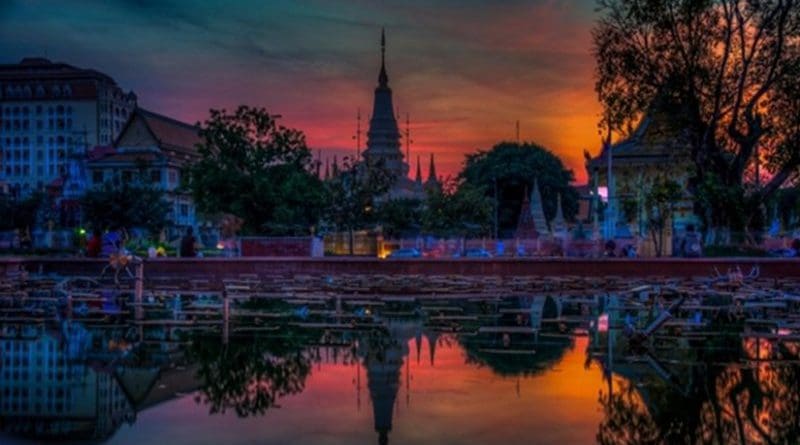Cambodia: Asia’s Poland? – OpEd
By Adam Arthur
While it is at times problematic to draw parallels between European and Asian regional histories, the history of Poland proves an excellent heuristic for global audiences seeking to understand the trajectory of Cambodia. Both states have found themselves in a vulnerable geographical position, often crushed between different imperial conquests or foreign incursions. When considering Polish history, for example, one of the first incidents that comes to mind is the country having been crushed between the Soviet Union and Germany during the second World War. Cambodia has been caught in a similar in-between space throughout the decades and centuries, changing hands between various occupiers throughout its history.
Unlike Poland, however, which saw the fall of its autocratic regime to peaceful revolution in 1989, Cambodia has never quite been able to escape autocracy. Cambodia’s present hereditary autocratic regime, laden with paranoia, exists as a continuation of its past as a country subject to foreign conquests, occupations, and manipulations. It is this history, and the ensuing distrust inherent in its political system, that has influenced the governing Cambodian People’s Party (CPP) to engage in character assassination as a principal tactic to undermine its rivals.
North American observers tend to castigate the United States for Cambodia’s historic and geographic situations – often pointing to United States intervention in Cambodia during the Vietnam War, particularly the seeding of landmines across Cambodian territory. Critics of American foreign policy in particular tend to place the blame for these actions on the now-centenarian former National Security Advisor and Secretary of State Henry Kissinger, who served during the Nixon and Ford administrations. However, American involvement in Cambodia simply functioned as one intervention among several, and was considerably less direct than those interventions which book-ended it: significantly, French colonialism and a period of military occupation by Vietnam.
In 1863, Cambodia became a French colonial protectorate. This situation lasted for 90 years, with Cambodia’s position as a French colony concluding in 1953. The retreat of French colonial power in Southeast Asia led to the emergence of the Khmer Rouge, a radical agrarian Communist organization. At around roughly the same time, the United States backed a puppet regime ruled by the autocrat Lon Nol, in hopes of stemming the tide of Communism in Cold War Asia. Lon Nol, however, was ultimately ousted by the Khmer Rouge in 1975, fleeing toward a life of exile in the United States.
The rule of the Khmer Rouge under the dictator Pol Pot, known by the nickname “Brother Number One”, is generally considered by historians to be the most traumatic point in Cambodia’s recent history. Between 1975 to 1979, bloody political purges in Cambodia by the Khmer Rouge led to between 1.5 million to 3 million deaths. The Khmer Rouge, however, were eventually ousted by the Vietnamese, who fought a brief war against the Khmer Rouge in Cambodia that began in 1978 and led to a continuing military occupation of the country up to 1989. This period was followed by United Nations intervention, which entailed the oversight of a transitional government in Cambodia. It was this period that saw the rise of Hun Sen, the Cambodian People’s Party autocrat who recently, in August 2023, ceded power to his son, Hun Manet. This hereditary model, along with character assassinations of rival parties and political figures, shows that Cambodia is far from any meaningful state of democracy.
Up until the 1980s, Cambodia’s trajectory mirrors that of Poland – a country that has faced “twenty to well over two hundred, invasions, wars […] or foreign operations.” Poland, however, has benefitted from the collapse of Communist autocracy and integration within the European Union. Cambodia, however, has taken a different path – while it is a member of ASEAN, as a bloc ASEAN is significantly less tied-together than the European Union, focused principally on discussions of trade and secondarily on security. Additionally, cultural and civilizational divides remain firmer in Southeast Asia than in Europe.
Cambodia, however, can not be said to have benefitted from the period of transitional governance that gave rise to the hereditary one-party dictatorship of Hun Sen and his family. Although Cambodia is ostensibly a democracy per its constitution, the country has experienced over three decades of governance by the same family and political party. According to the U.S. Library of Congress, the sole challenger to the Cambodian People’s Party is the Cambodian Rescue Party, which has been relegated to a weak and ineffectual status. Visitors to Cambodia will notice massive state-sponsored billboards advertising the glory of the Cambodian People’s Party dotting the country’s national highways, while those advertising the Cambodian Rescue Party are smaller, and have often been anonymously defaced.
Historically, Cambodia and Poland found themselves in similar geopolitical positions. Both were governed by foreign powers for much of their history, typically by way of military occupations resulting from their weak geostrategic location. Both experienced the horrors of war and autocratic rule during the 20th century – Poland’s experience in World War II with competing claims between the Soviet Union and Nazi Germany; Cambodia’s experience as a proxy in the Vietnam War and its subsequent occupation by Vietnam; and both countries’ periods of authoritarian Communist rule, which in each case ended on drastically different terms.
Where the paths diverge is in Cambodia’s position as a developing country that does not benefit from Poland’s location or ability to integrate into a regional organization such as the European Union (of which Poland has been a member since 2004). The view of Cambodia, particularly post-conflict, as a country in need of help may have rubbed salt on the wound through a transitional period that empowered Hun Sen – and whose lasting effects can be seen to this day in the accession of Hun Manet. Up to a point, Cambodia can be considered Asia’s Poland. Although after that point, the path that it has followed differs greatly.

